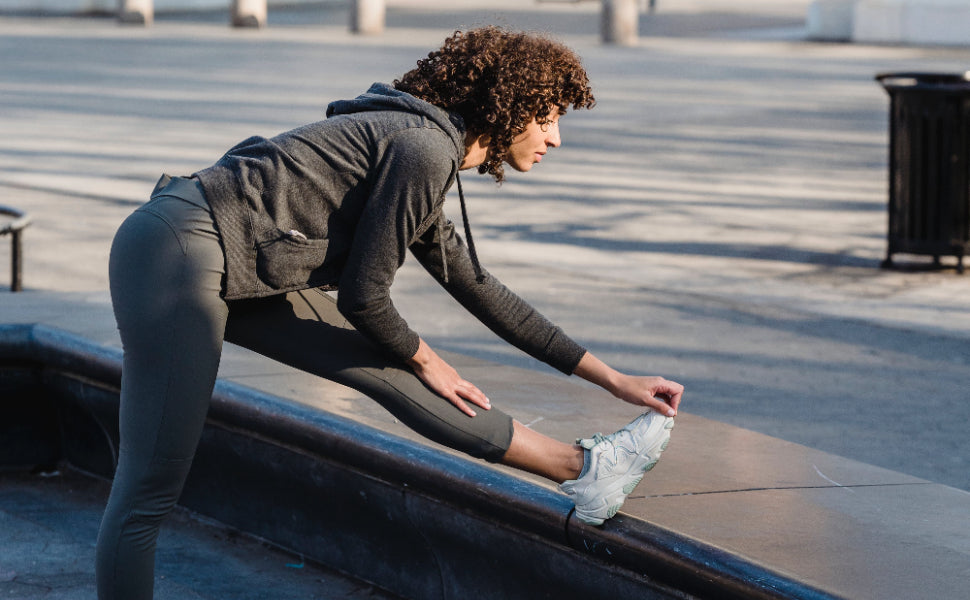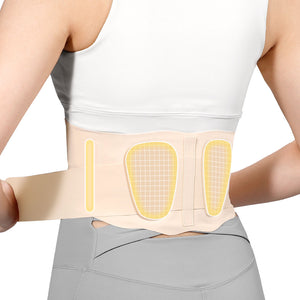When I Straighten My Knee It Hurts

The pain that occurs when you straighten your knee can significantly affect your everyday activities and overall well-being. The purpose of this article is to describe the various reasons why knee pain may occur when stretching and to offer viable remedies. Readers can gain more knowledge regarding knee pain during knee straightening as well as suggestions for maintaining knee health by reading this article.
fivalifitness.com
Common Causes
Straightening one's knee might result in knee pain for a variety of reasons. Typical causes include some of the following:
- Patellofemoral pain syndrome: This ailment occurs when the cartilage under the kneecap is irritated or inflamed. It may hurt when bending the knee or climbing and descending stairs.
- Meniscus tear: In the knee, the meniscus is a springy cartilage that aids in stabilizing and cushioning the joint. Meniscus tears can result in discomfort, stiffness, and a restricted range of motion.
- Ligament injury: The knee's ligaments offer support and stability. When straightening the knee, discomfort may result from damage to one of these ligaments, such as the medial collateral ligament (MCL) or anterior cruciate ligament (ACL).
- Osteoarthritis: This degenerative joint condition can lead to knee discomfort, stiffness, and restricted movement.
- Bursitis: The knee joint is cushioned by tiny, fluid-filled sacs called bursae. When the knee is straightened, pain and soreness may result from inflammation.
- Tendinitis: This refers to the inflammation of the tendons that attach muscles to bones. If the patellar tendon, which joins the kneecap to the shinbone, is impacted, it may hurt to straighten the knee.
- A syndrome known as an iliotibial band: The iliotibial band (IT band) is a thick band of tissue that extends from the hip to the knee on the outside of the thigh. Straightening the leg may hurt the outside of the knee when the area gets irritated or tight.
These are only a handful of the typical reasons why straightening the knee can cause knee pain. Seeing a healthcare professional is crucial for a precise diagnosis and a suitable course of therapy.
Diagnostic Methods
Healthcare professionals may employ a variety of diagnostic techniques, such as the following, to determine the underlying reason for knee pain during knee straightening:
- Physical examination: The medical professional will evaluate your knee's stability, range of motion, and the presence of any swelling or soreness. Additionally, they could conduct particular examinations to assess meniscus or ligament damage.
- Medical history: Your doctor will inquire about your symptoms, including the sort of pain you feel, when it started, any prior operations or injuries, and any activities that make the pain worse or better.
- Imaging tests: X-rays are frequently used to evaluate the knee's bones and joint alignment. It can be used to detect anomalies in the bones, arthritis, or fractures. Meniscus tears and ligament injuries can be identified via magnetic resonance imaging (MRI), which can offer more detailed views of soft tissues such as cartilage, tendons, and ligaments.
- Arthroscopy: To directly view the structures, a tiny camera known as an arthroscope is inserted into the knee joint during this minimally invasive treatment. It can be applied for both therapeutic and diagnostic reasons, enabling a more precise diagnosis.
- Laboratory tests: To rule out systemic diseases like gout or rheumatoid arthritis, which can cause knee discomfort, blood tests may be prescribed.
Healthcare professionals can identify the underlying cause of knee discomfort during knee straightening and create a suitable treatment strategy based on the findings of these diagnostic techniques. Seeking advice from a medical expert is crucial in order to receive a precise diagnosis and customized treatment.
Treatment Options
Depending on what is causing the discomfort, there are many treatment options for knee pain that occurs when straightening the knee. Here are a few typical methods:
- Rest and activity modification: You can lessen symptoms by allowing your knee to rest and by avoiding activities that make it worse. You might need to temporarily avoid high-impact activities or modify your fitness regimen.
- Ice and heat therapy: You can lessen discomfort and inflammation in the affected knee by applying ice packs or cold compresses. Warm towels or a warm bath are two examples of heat treatments that can help ease pain and relax the muscles.
- Pain medication: Acetaminophen and nonsteroidal anti-inflammatory medications (NSAIDs), which are available over-the-counter, can be used to treat mild to moderate knee pain. But if you take other medications or have any underlying medical concerns, it's crucial to adhere to the appropriate dosage and see a doctor.
- Physical therapy: A physical therapist can offer exercises to support appropriate alignment and movement, strengthen the muscles surrounding the knee, and increase flexibility. Additionally, they could employ methods like ultrasound or manual treatment to lessen discomfort and enhance performance.
- Knee bracing or supports: Using crutches or orthotics, or wearing a knee brace, may be advised depending on the individual situation in order to ease pressure on the knee joint and offer stability.
- Injections: To lessen knee pain and inflammation, corticosteroid injections may be utilized in some circumstances. In order to provide lubrication and cushioning for knee osteoarthritis, hyaluronic acid injections, sometimes referred to as viscosupplementation, may be taken into consideration.
- Surgical intervention: Meniscus repair, ligament reconstruction, arthroscopic surgery, or joint replacement may be required if conservative therapy proves futile, and their necessity will depend on the kind and severity of the underlying problem.
For an accurate diagnosis and a customized treatment plan suited to your particular ailment, it is crucial to speak with a healthcare professional.
Lifestyle Changes
A major part of controlling and lowering the risk of knee pain is changing one's lifestyle and taking preventative steps. The following suggestions are provided:
- Keep a healthy weight: Being overweight puts additional strain on the knees, raising the possibility of joint deterioration and knee pain. Maintain a healthy weight by eating a balanced diet and doing frequent exercise.
- Exercise on a regular basis: Walking, cycling, and swimming are examples of low-impact exercises that are generally good for knee health. Seek advice from a medical practitioner or physical therapist regarding suitable workout regimens.
- Warm-up and cool-down: To prepare the muscles and joints for physical activity or exercise, warm up with modest stretching and motions. In a similar vein, cool down following to progressively lessen intensity and avoid stiffness.
- Employ the right techniques and safety equipment: To lower the risk of injury when engaging in sports or other activities that require repetitive knee movements or impact, employ the right techniques and safety equipment, such as knee braces or pads.
- Adjust your activities: If you have a history of knee discomfort or current knee issues, adjust your activities or stay away from ones that overstress your knees. This can entail staying away from high-impact activities or, if necessary, employing supportive equipment.
- Adopt good posture: You may help distribute weight more evenly and lessen the pressure on your knees by keeping your posture straight when standing, walking, and sitting.
- Steer clear of extended sitting or standing: If your work necessitates extended sitting or standing, take frequent breaks to stretch and ease knee strain.
- Put on the proper shoes: Pick footwear that will give your knees and feet the necessary stability, cushioning, and support. People with certain foot or gait problems may benefit from orthotic inserts or custom-made shoe inserts.
- Retain muscular strength and flexibility: To keep your range of motion improved and your flexibility intact, do frequent stretches. To improve support and stability, concentrate on strengthening the muscles surrounding the knee, such as the hamstrings and quadriceps.
- Pay attention to your body. Observe any indications or symptoms of discomfort or pain in the knees. See a medical expert for an assessment and suitable treatment if your knee pain is ongoing or getting worse.
fivalifitness.com
Reference
Knee Pain When Straightening Your Leg
-
Posted in
Healthy Lifestyle, Joint, Pain













